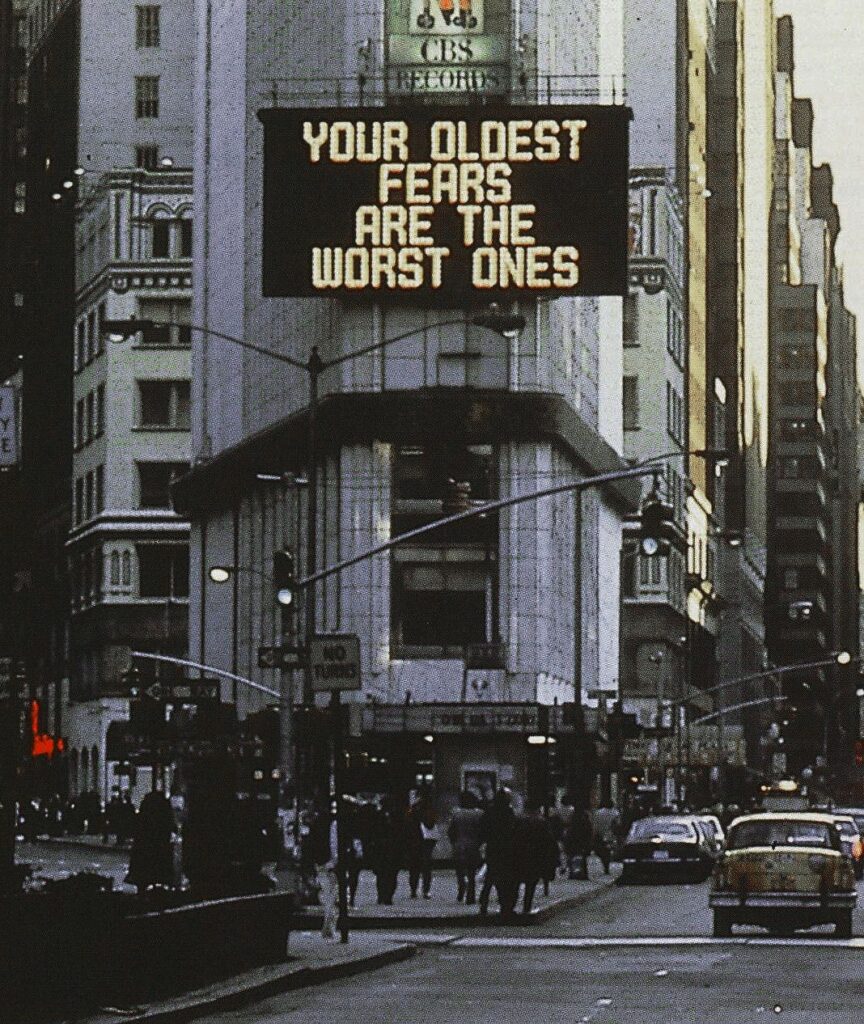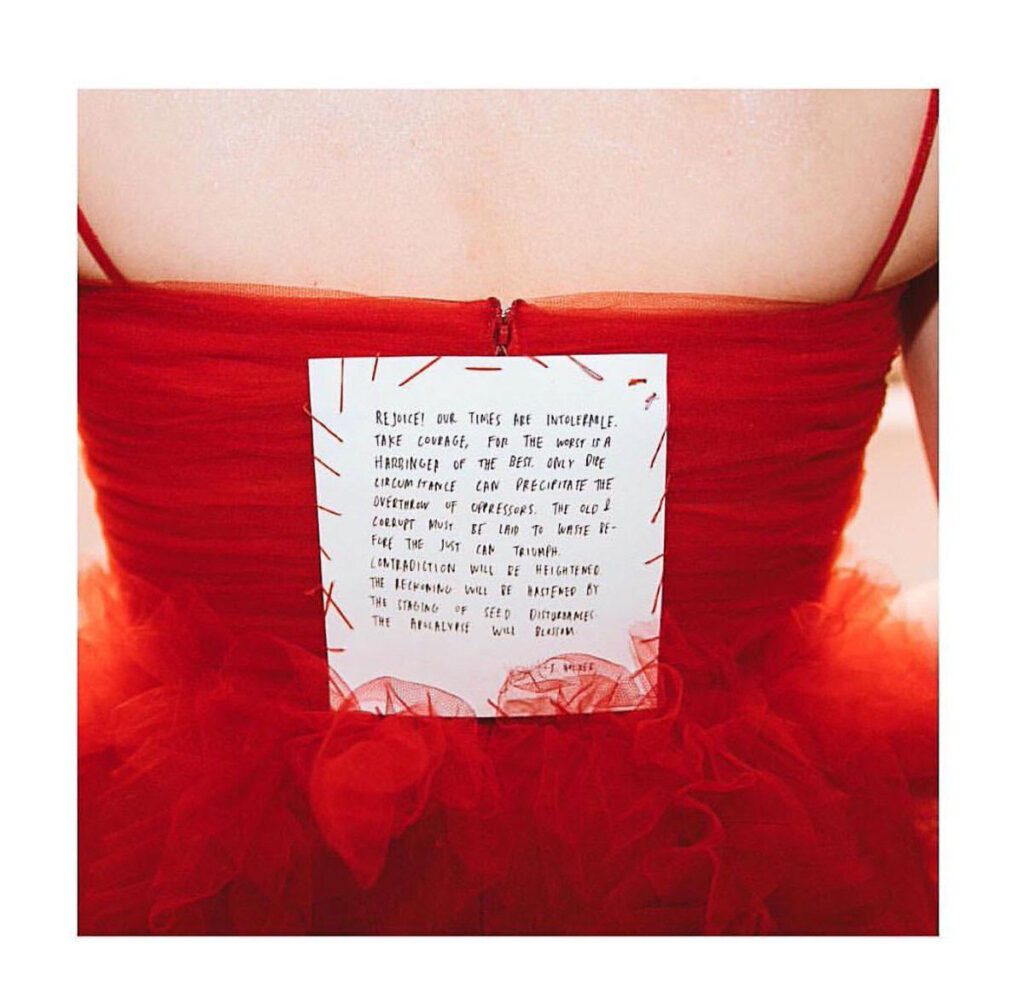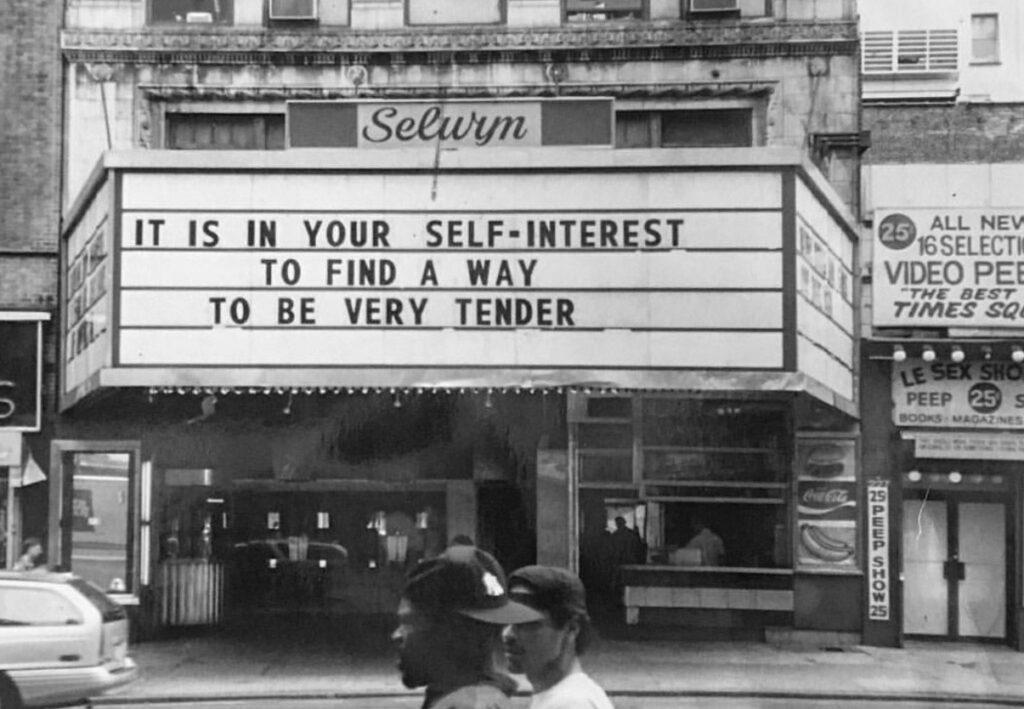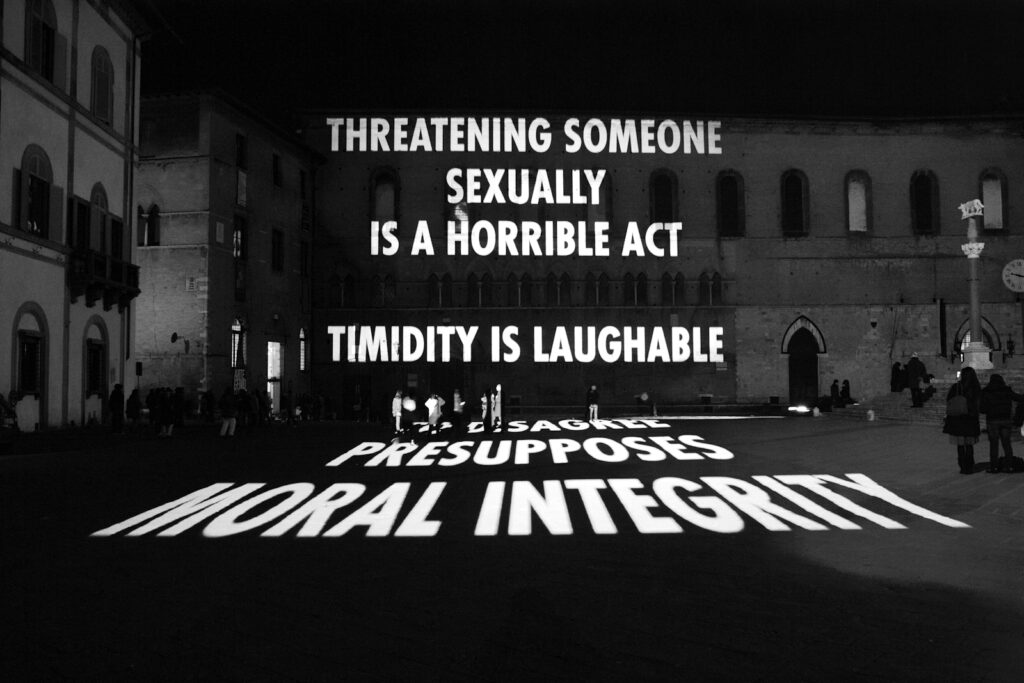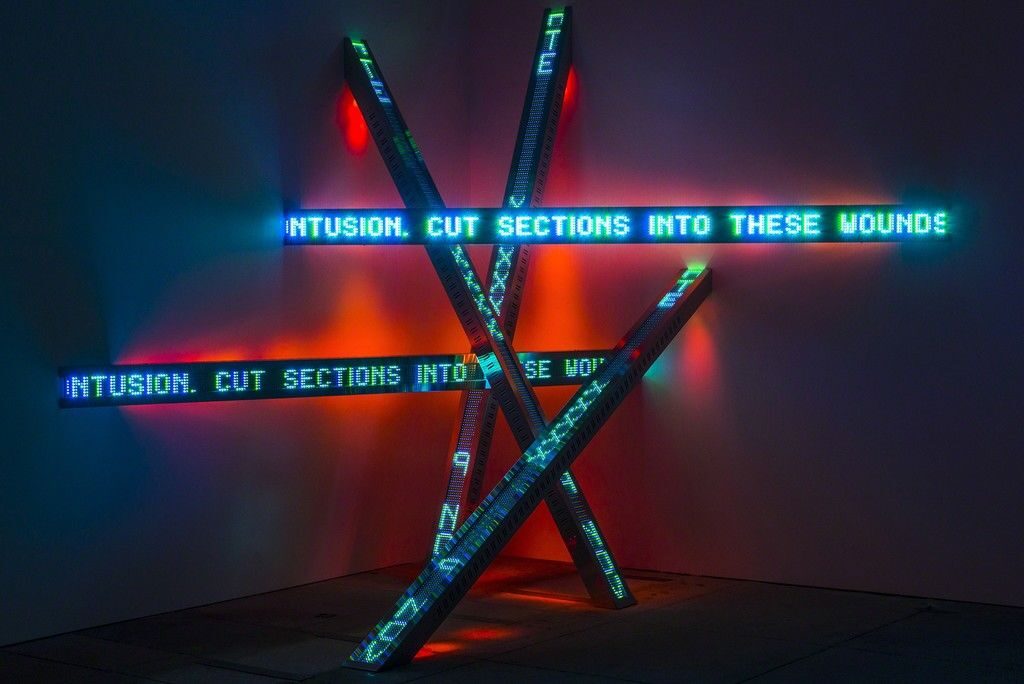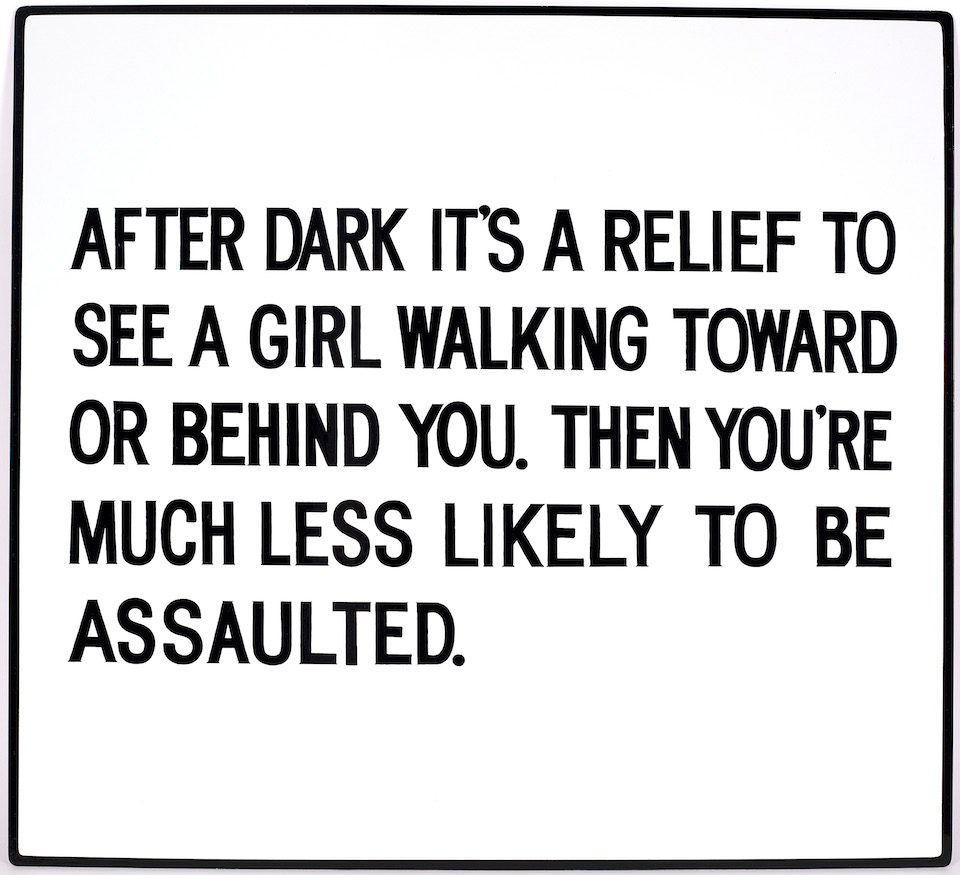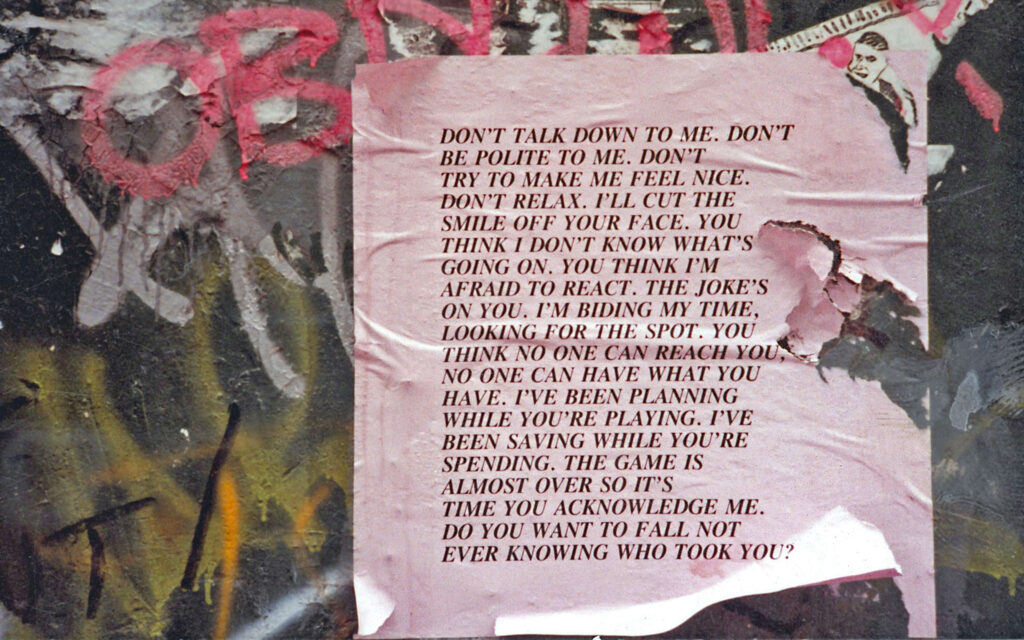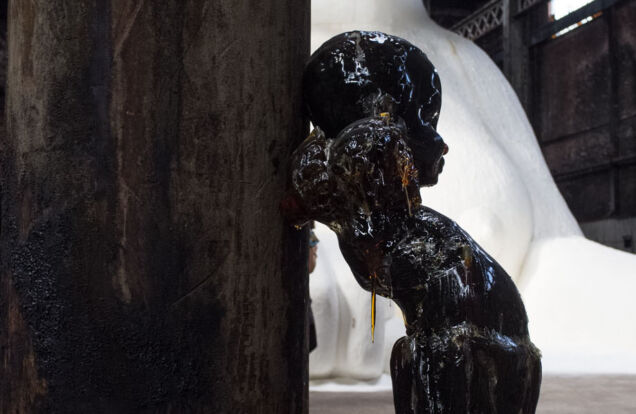JENNY HOLZER
Her Texts Ring "Truer" Than Ever

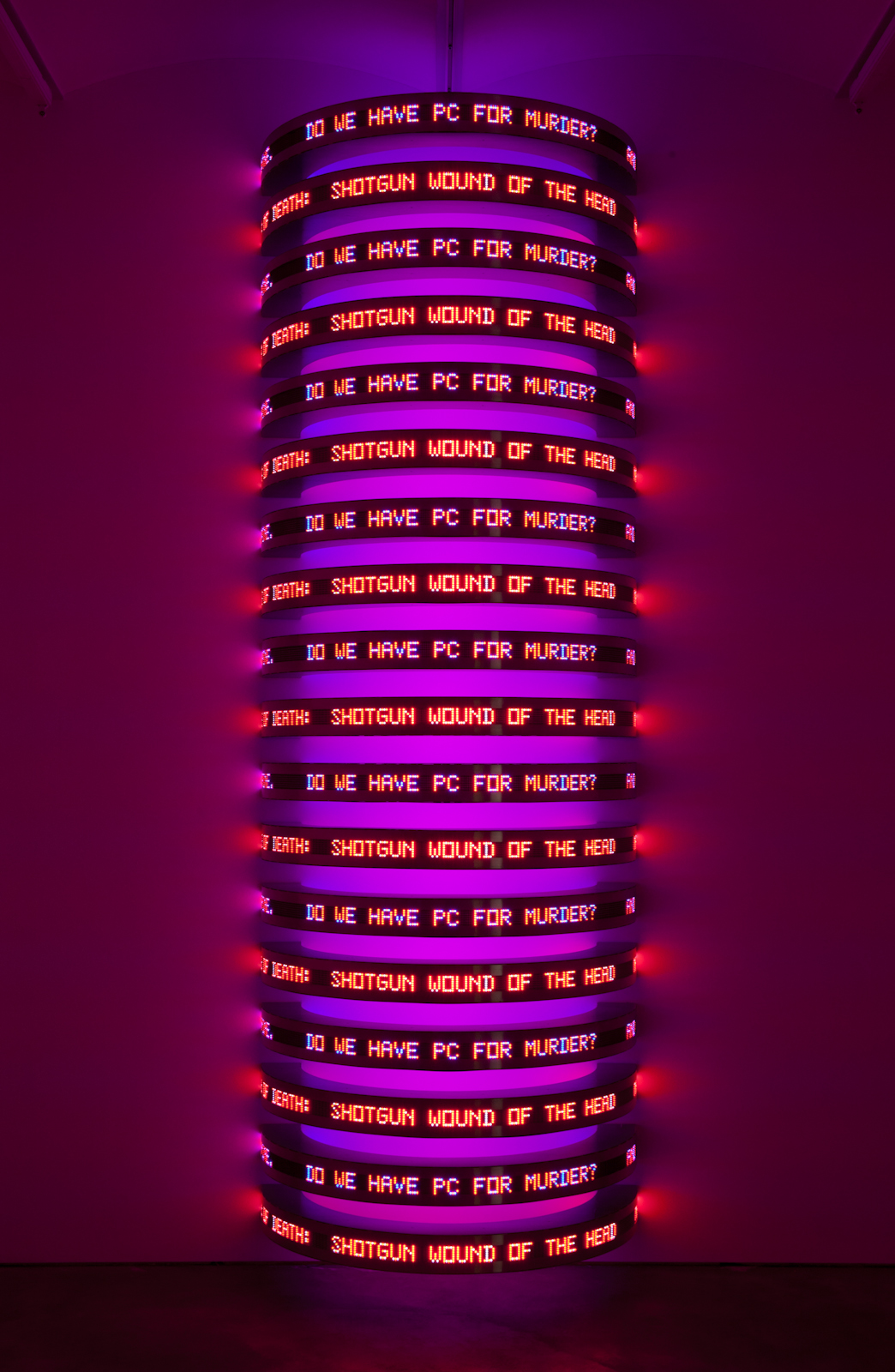
People say a picture is worth a thousand words—but what is an image of words worth? American neo-conceptual artist Jenny Holzer has nailed the art of poetically conveying profound socio-political commentary in a digestible and relatable format. Holzer uses words and language as a medium itself. Her works blur the line between art and activism, often questioning our roles in society, the differences between public and private life, gender norms, identity politics, capitalism and more.
Holzer emerged on the New York City art scene in the 1980s, alongside a feminist generation of artists seeking avant-garde ways to instill commentary in visual objects. Integral to her practice is placing words in public spaces to reach the widest audience that is not necessarily educated in art. In 2012 she told Interview Magazine, “I like placing content wherever people look…and that can be at the bottom of a cup or on a shirt or hat or on the surface of a river or all over a building.”
In the late ’70s, Holzer began creating some of her best-known works, Truisms, which included roughly 300 aphorisms and slogans composed of modern clichés or commonly held truths. Originally appearing as anonymous posters wheat-pasted to buildings, walls and telephone booths around Manhattan, her Truisms were eventually seen as large-scale installations in places like Times Square. Some of her most iconic and provocative Truisms read, “Abuse of Power Comes as No Surprise” and “Men Don’t Protect You Anymore.” Her Truisms morphed into Inflammatory Essays (1977-82) and also influenced a 1981 Living series—that addressed the necessities of daily life: eating, breathing, sleeping and human relationships.
In the late ’80s, her texts began to incorporate electronics and have since been seen as advertising billboards, light projections on buildings and LED signs. Although Holzer is no longer the author of the texts she displays, the curated choice of words taken from others and the purposeful context within which she presents them continues to pack a meaningful punch. During a year of global unrest that has revealed severe inadequacies in our society, Holzer’s words seem to reverberate louder than ever.
An excerpt from Inflammatory Essays—which the singer Lorde stitched to the back of her dress for the 2018 Grammys—is particularly significant: “Rejoice! Our times are intolerable. Take courage, for the worst is a harbinger of the best. Only dire circumstance can precipitate the overthrow of oppressors. The old & corrupt must be laid to waste before the just can triumph. Contradiction will be heightened. The reckoning will be hastened by the staging of seed disturbances. The apocalypse will blossom.”
